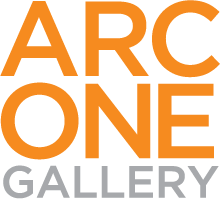Gallery Sally Dan-Cuthbert with ARC ONE Gallery are delighted to present Partu (Skin), an exhibition of functional art by collaborative designers Johnny Nargoodah & Trent Jansen, for Melbourne Design Week.
Johnny Nargoodah and Trent Jansen have been collaborating in the design and crafting of collectable furniture since they met in Johnny’s hometown of Fitzroy Crossing, as part of Fremantle Art Centre’s ‘In Cahoots’ project in 2016. For that project they worked with fellow Mangkaja artist, Rita Minga to design an armchair that was their interpretation of a local mythical creature called the ‘Jangarra’ (2017), now in the permanent collection of the National Gallery of Victoria, as well as the ‘Collision Collection’ (2017), born out of experimentation with leather in combination with old car panels found in the scrub around Fitzroy Crossing.
Johnny is a Nyikina man who has spent much of his life working with leather as a saddler on remote cattle stations, and Trent is an avant-garde object designer from Thirroul in New South Wales, who regularly experiments with leather and animal pelts in his collectable design work. Their ‘Collision Collection’ (2017) gave some insight into the unorthodox outcomes that might result from the coming together of these oddly mismatched sensibilities and skills in working animal skins. ‘Partu’ (2020) is the Walmajarri word for ‘skin’, and is their latest collaborative project experimenting with this combination of disparate sensibilities. This body of work is designed by Trent and Johnny and both designers have their own lens through which to view the processes and inspirations governing these works:
From Trent’s point of view, this project is an experiment in the generation of hybrid material culture. Material Culture Theory says that the artefacts we create embody the values, ideas, attitudes and assumptions (the culture) of the creator. But what if an artefact is created collaboratively by two people from different cultures? Does this artefact exhibit the cultural values of both authors? If so, how do these cultural values manifest?
From Johnny’s point of view, the project has a few different aspects to it: Making - we use rubbish, recycled frames, we make chairs and cabinets and use the leather to make it look good, to make it furniture that is usable and looks nice; recycling - it is important to reuse old rubbish we find, and the leather makes it special; history - the leather gives it a reference to the history of Fitzroy Crossing and station life. Saddlers used to come and repair saddles using leather, making twisted rope out of cowhide. This is what I think about when we are using the leather; and sensory - the smell of that leather is so good. It brings back memories, triggers those old memories of walking around the saddle room in Noonkanbah shed. There is a sensory response, that’s important.
The collaborative process and experimentation are key to this project. Trent and I work together on this, we both sketch, look at each other’s sketches and from there we mix it up. I’m really enjoying the skills sharing, learning from each other, we both have a lot of different ideas, we keep coming up with new works, keep experimenting.
Unlike their ‘Jangarra Armchair’, designed and made in Fitzroy Crossing, ‘Partu’ was developed in Thirroul on the New South Wales Coal Coast. Johnny and Trent came together three times over a period of 18 months, developing new methods for collaboration that could shape their incongruent knowledge, methods and skills in designing and making into co-authored outcomes. These methods include: ‘Sketching exchange’, a process of back and forth sketch iteration, allowing an idea to evolve with equal input from both creators; and ‘designing by making’, a method of working with materials at full scale, to design an object as it is being made. In this approach the prototype is the sketch and both collaborators work together to carve, construct and/or manipulate material, giving the object three-dimensional form as they design and make simultaneously.
‘Saddle’ (2020) gains its name from the first sketch that Johnny made for this collection, an elongated saddle that led to experiments in stretching supple Scandinavian upholstery leather between geometric timber and steel forms to generate new, complex transitioning forms. Sketch exchanges over an 18-month period eventually yielded an entire collection built on this beautiful capability of leather to stretch between forms and give shape to the space in-between objects.
‘Ngumu Jangka Warnti’ (2020) is the Walmajarri phrase for ‘whole lot from rubbish’. The design of this collection began with a trip to the local scrap metal yard, in a vague search for anything interesting. Johnny and Trent salvaged a selection of discarded aluminium mesh and used this found metal as the starting point for experimentation. Trent and Johnny designed these pieces as they made them, starting with a mesh substrate cut vaguely in the shape of a chair, and together beat the material with hammers, concrete blocks and tree stumps until it took on a form that they both liked. This beaten geometry was then softened by laminating New Zealand saddle leather to skin the mesh, masking its geometry and softening its idiosyncratic undulations.
Johnny Nargoodah and Trent Jansen are represented by Sydney’s Gallery Sally Dan-Cuthbert who are partnering with ARC ONE Gallery to bring this new body of work to Melbourne Design Week 2020. The creation of this body of work was funded by the Australia Council for the Arts, the National Gallery of Victoria via Melbourne Design Week, UNSW Art & Design, the Western Australian Department of Local Government, Sport and Cultural Industries and Mangkaja Arts Resource Agency.


